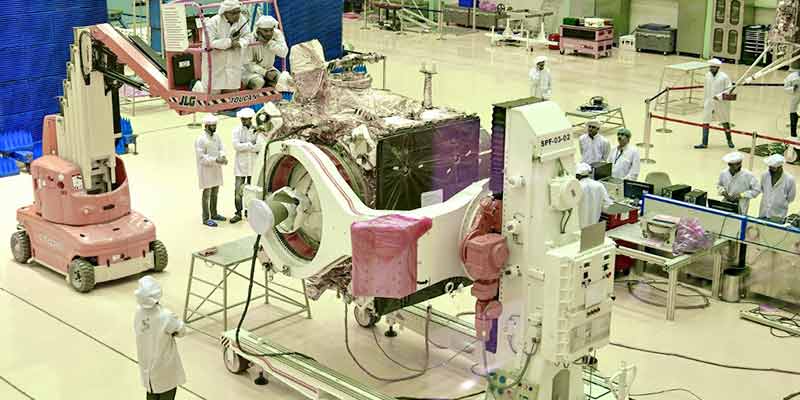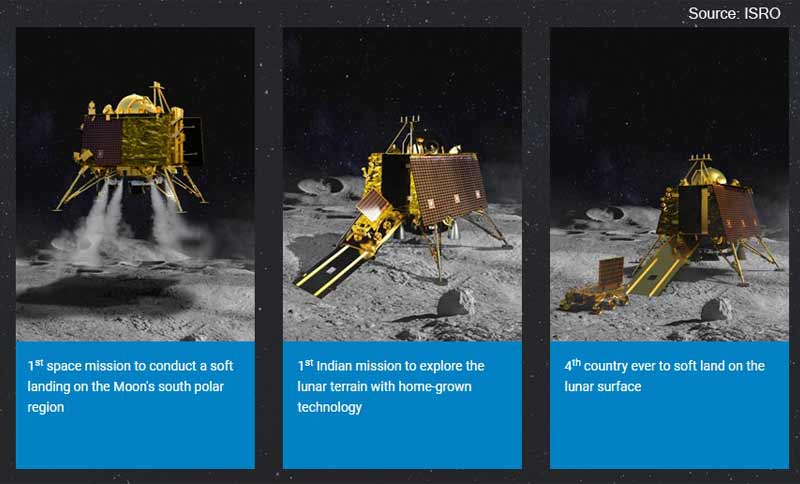- India
- Jun 13
ISRO gears up for its first ‘moonwalk’
India’s second sojourn to the Moon, Chandrayaan-2, would be launched on July 15, Indian Space Research Organisation (ISRO) announced, as it is all set for the most complex mission ever undertaken by it.
Under the nearly Rs 1,000 crore mission, the landing on the Moon near the South Pole would be on September 6 or 7 on an uncharted territory, ISRO chairman K. Sivan said.
The launch would take place at 2.51am on board the GSLV MK-III vehicle, the heaviest rocket built by ISRO, from the spaceport of Sriharikota in Andhra Pradesh.
Soft-landing on the South Pole of the Moon, a territory that has never been visited by any spacecraft, is considered the most challenging part of the mission. If all goes well, India would be the fourth country after the US, Russia and China to perform a soft landing on the moon and put a rover on it.
Chandrayaan-2 is an advanced version of the previous Chandrayaan-1 mission, which was launched in 2008.
What are the main stages of the mission?
The spacecraft, with a mass of 3.8 tonne, has three modules — Orbiter, Lander (Vikram) and Rover (Pragyan).
After the launch into an earth-bound orbit by GSLV MK-III, the integrated module would reach the Moon’s orbit using the orbiter propulsion module and subsequently, Lander would separate from Orbiter and soft land at the predetermined site, close to lunar South Pole, and deploy the Rover.
The Rover would roll out for carrying out scientific experiments on the lunar surface. ISRO said instruments were also mounted on Lander and Orbiter for carrying out scientific experiments.
Orbiter: At the time of launch, the Orbiter will be capable of communicating with Indian Deep Space Network (IDSN) at Byalalu near Bengaluru as well as the Lander. The mission life of the Orbiter is one year and it will be placed in a 100X100 km lunar polar orbit.
Lander: It is named after Vikram Sarabhai, the father of the Indian space programme. It is designed to function for one lunar day, which is equivalent to about 14 Earth days. Vikram has the capability to communicate with IDSN, as well as with the Orbiter and Rover. The Lander is designed to execute a soft landing on the lunar surface.
Rover: It is a 6-wheeled robotic vehicle named Pragyan, which translates to ‘wisdom’ in Sanskrit. It can travel up to 500m and leverage solar energy for its functioning. It can only communicate with the Lander. It will take four hours for the Rover to come out to the surface after the Lander makes a touchdown.
The Lander and Rover will have the mission life of 1 lunar day (14 earth days) and the day of landing (September 6 or 7) will be the beginning of lunar day. “For one lunar day this lander and rover will be functioning and carry out scientific experiments,” Sivan said.
The most crucial phase
The Lander will touch down on a rugged lunar surface in the final descent, which, according to Sivan, would be the “most terrifying moment” of the mission. “This 15 minutes is going to be terrifying to all of us, because the space agency has never undertaken such type of complex flight. This 15 minutes flight is the most complex mission ISRO has ever undertaken,” he said.
The landing site, at about 70 degrees south latitude, is the southernmost for any mission, not attempted before by any country, according to ISRO, as the Indian space agency eyed an ambitious feat after missing many dates.
First mission to the South Pole
Pointing out Chandrayaan-2 is going to South Pole, a place where nobody else has gone, Sivan said the entire scientific community of the nation and the globe were eagerly waiting for the mission. According to him, there is both convenience and science involved for choosing the South Pole.
“From the science point of view, the South Pole is under shadow region more than North Pole, so because of this special aspect of South Pole, water is expected to be more there and also more minerals are expected to be there,” he added.
The scientific payloads on board Orbiter, Lander and Rover are expected to perform mineralogical and elemental studies of the lunar surface.


